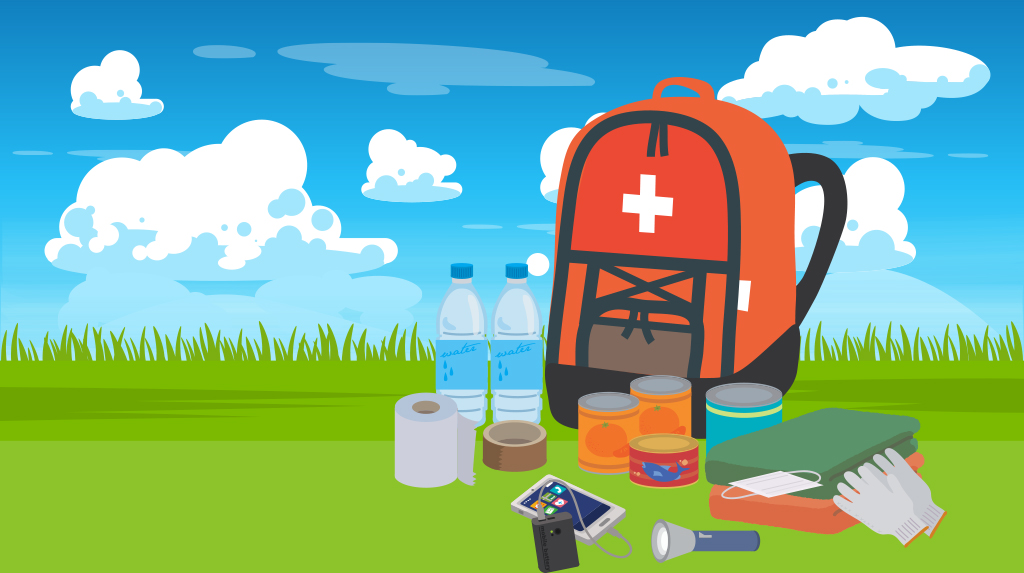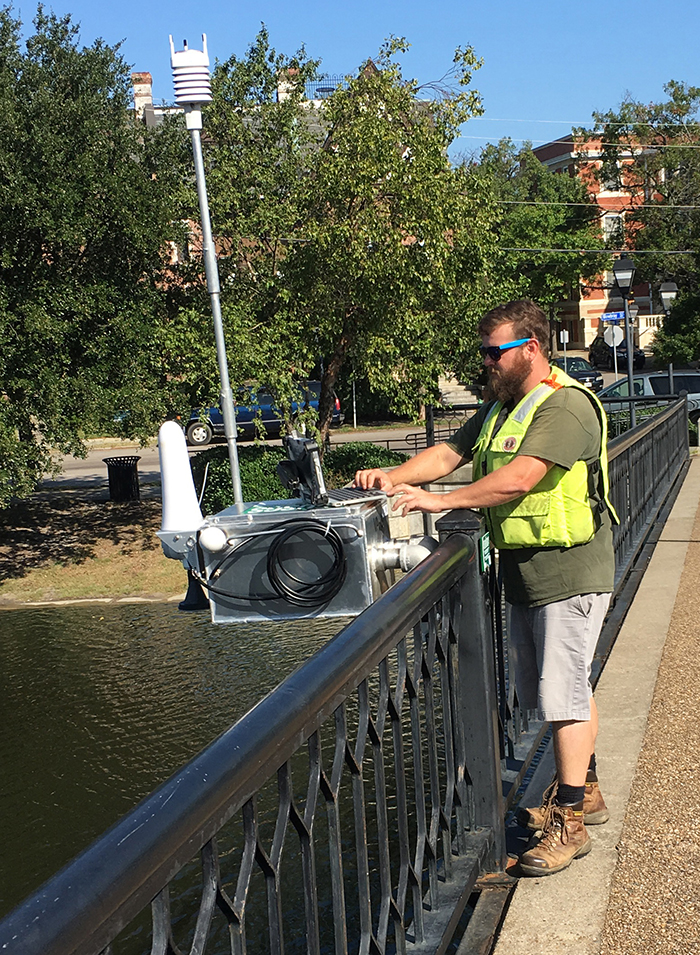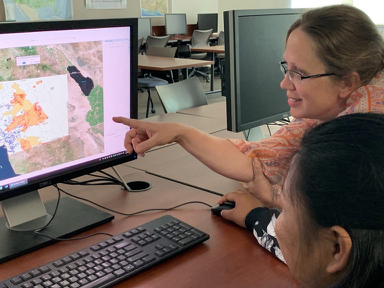Brief
Dealing With Disasters Through Emergency Response Teen Science Cafés
Connected Science Learning January–March 2020 (Volume 2, Issue 1)
By Jan Mokros, Michelle Hall, and Michael Mayhew

According to a 2012 United Nations report, many countries prioritize children’s learning about the genesis, prevention, and mitigation of natural disasters (Selby and Kagawa 2012); the United States, however, falls behind with respect to disaster education (FEMA 2010). The Next Generation Science Standards disciplinary core idea Natural Hazards (ESS3B) states, “Students who demonstrate understanding can evaluate or refine a technological solution that reduces impacts of human activities on natural systems” (NGSS Lead States 2013). But how many students demonstrate such understanding? Our work with Teen Science Cafés (TSCs) showed very low baseline knowledge (4.1 items correct out of 10) on a multiple-choice test tapping knowledge of humanitarian technology.

Credit: USGS
U.S. Bureau of Labor Statistics indicators show that the nation has a strong need for STEM (science, technology, engineering, and math) practitioners who understand, respond to, and mitigate disasters (Torpey 2018). These practitioners often need only two years of higher education to enter their fields, where they learn to employ cutting-edge technology to help others. Where will these practitioners come from if we don’t make the myriad aspects of their work more visible to high school students?
Emergency Response TSCs are a just-in-time, customizable way to introduce teens to quickly evolving technological strategies for understanding, responding to, and mitigating disasters. Since the triple-threat hurricane season of 2017, we have held 20 Cafés nationwide on disasters ranging from hurricanes and flooding to wildfires and avalanches. Unfortunately, there is no lack of disasters to choose from, wherever you are located.
We have created a resource bank to enable a range of educators to hold an event that introduces teens to a STEM practitioner, engages them with a cool piece of technology, and fosters dialogue about the role of STEM workers in addressing disasters. Although TSCs are typically held in an out-of-school setting, the format for a Café could work equally well in school if you have the necessary ingredients of time (90 minutes), teens who are willing to step up to the plate, a relaxed venue, and food!
How to get started
- Meet with teens to examine the disasters affecting your own community and identify one or more that captivate their interest. Read the “Cool Cafés” section of our blog for ideas.
- Ask teens to brainstorm ideas about STEM practitioners in your community who deal with disasters and could be presenters at your Café. We’ve had National Weather Service staff, game wardens, drone operators, firefighters, and EMTs fill this role. These people are known in the community and their mission involves communicating with the public.
- Ask a small group of teens to help prepare the STEM practitioner by holding a dry run of their presentation. Teens provide feedback to the presenter and help this person understand the interests and backgrounds of the high school audience. The presentation must be brief (20 minutes) and engaging and highlight stories of the person’s work.
- Help the presenter develop a hands-on activity that uses technology to illustrate their work. We’ve found that teens especially like using GIS (e.g., a game warden with a dog who carries a GIS device), sensor technology, and crowd-sourced apps that show, for example, how a fire is spreading.
- Schedule the event, step back, and let teens run the show! Leave plenty of time for question-asking and for exploring the technology.

If the teens whom you work with show a high level of interest, consider holding a series of Cafés on disasters. The National Science Foundation–funded Teen Science Café Network is here to help. Contact us at https://teensciencecafe.org/contact.
Jan Mokros (jmokros@scieds.com) is senior research scientist at Science Education Solutions in Los Alamos, New Mexico. Michelle Hall (hall@scieds.com) is president of Science Education Solutions in Los Alamos, New Mexico. Michael Mayhew (m2mayhew@gmail.com) is senior research scientist at Science Education Solutions in Los Alamos, New Mexico.


